Recent Articles
Popular Makes
Body Types
2018 GMC Terrain vs. 2018 GMC Acadia: Which fits you best?
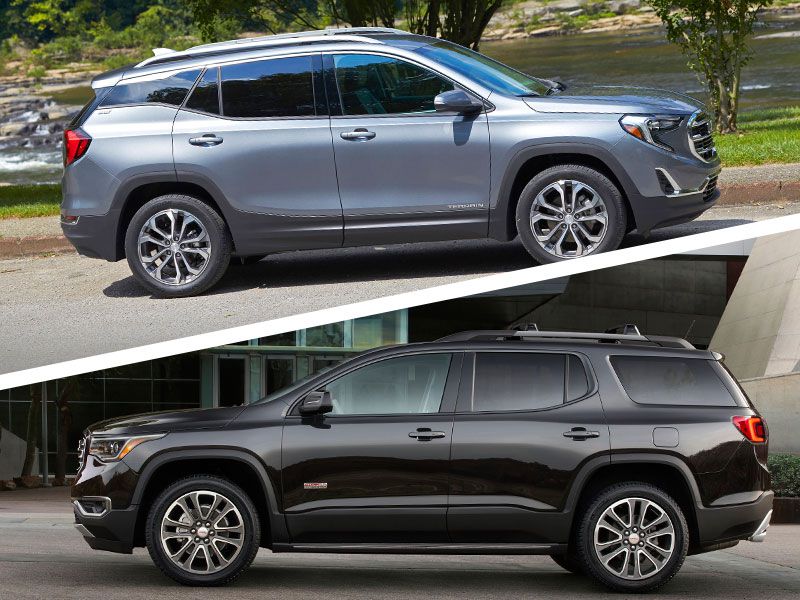
2018 GMC Terrain vs GMC Acadia exterior profiles
If you are in the market for a crossover SUV and are a fan of General Motors, then you’ve probably already considered both the compact GMC Terrain and the mid-size GMC Acadia. The two models have enough similarities that they are often cross-shopped against each other, as well as a few key differences (other than their obvious size disparity).
To help you make a more informed decision, the expert editors at Autobytel have created this in-depth comparison of the two models. Read on to discover which of the two would best suit your needs.
Pricing
Pricing for the 2018 GMC Terrain starts at a fairly reasonable $25,990 for a bare-bones front-wheel drive SL model, but it can run to over $45,000 for a fully loaded Denali version, making it a potentially expensive proposition for a compact crossover.
As expected, the larger mid-size Acadia is more expensive. An entry-level front-wheel drive model starts at $29,995, while a loaded Denali version with all the bells and whistles could cost you as much as $55,000. Overall, the Terrain is less expensive but lacks the Acadia's third row of seats and extra cargo space. Their equipment and features are otherwise quite similar.
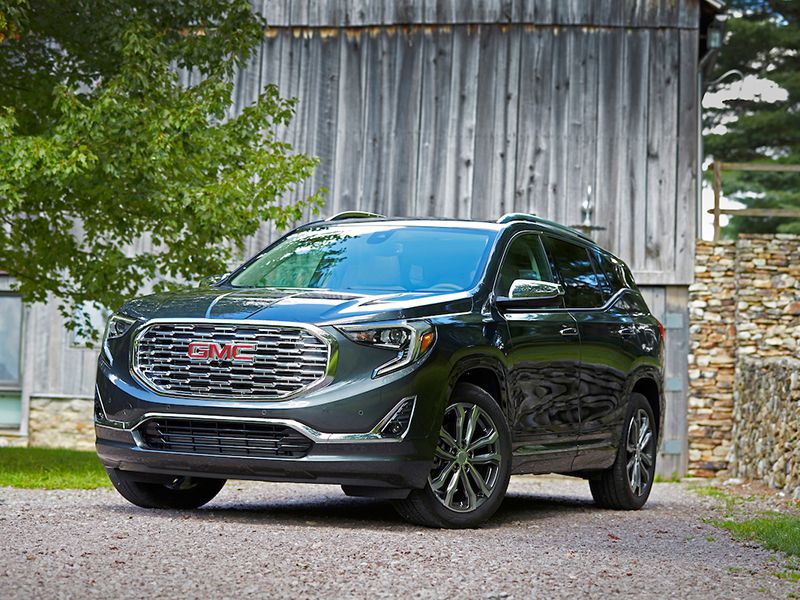
Photo by General Motors
Fuel Efficiency
The GMC Terrain with its available 1.6-liter turbocharged diesel engine is rated at 28 miles per gallon in the city and 39 mpg on the highway (or 38 with all-wheel drive) for a combined rating of 32 mpg, making it the most economical non-hybrid SUV on the market. Gasoline-powered Terrains aren’t as efficient, though they are class-competitive with a combined rating of 26 or 28 mpg for 1.5-liter version and 23 or 24 mpg for 2.0-liter versions (depending on whether you go for all-wheel drive).
Predictably, the larger, heavier, and more powerful Acadia has a lower but still reasonable combined rating of 23 mpg with its 2.5-liter four-cylinder and 20 or 21 mpg with its 3.6-liter V6.
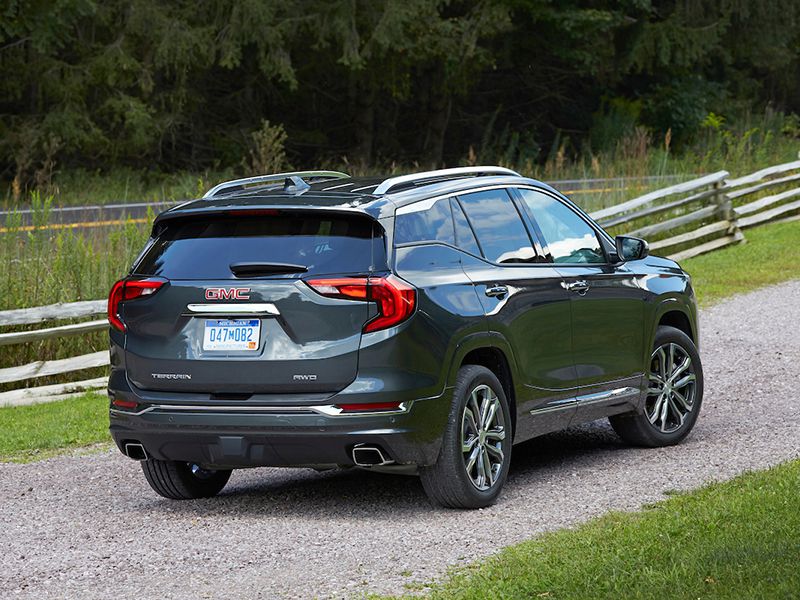
Photo by GMC
Behind the Wheel
The Terrain’s base 1.5-liter four-cylinder engine offers adequate power, but the available 252-horsepower 2.0-liter is more suited to the chassis’ capabilities. And while the 1.6-liter diesel isn’t a speed demon, its 240 lb-ft of torque has no problems pushing the Terrain down the road at normal highway speeds.
The story is similar with the Acadia. The base four-cylinder offers acceptable performance, while the 310-horsepower 3.6-liter V6 is probably more suitable for the vehicle’s size and weight. The smaller and nimbler Terrain is the more fun of the two to drive, while the larger Acadia isn’t as sporty but offers a more composed ride, especially when equipped with its available adaptive suspension.
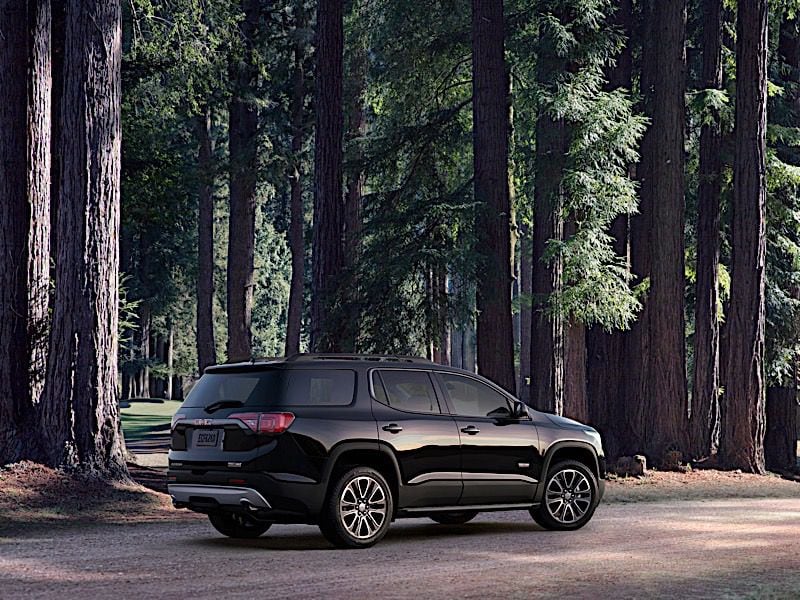
Photo by General Motors
Styling
While both the Terrain and the Acadia share a family resemblance, to our eyes the Terrain is easily the better looking of the two. We think it’s one of the best-looking of any of the crossovers currently on the market, with a tough look despite its floating roof and more flowing design.
The Acadia is attractive enough, with the tough look one expects from an SUV, but it just seems a little less cohesive than the Terrain. Both SUVs have the most presence when equipped with the larger wheels and tires and added chrome that come in their top-of-the-line Denali trim levels, while lesser versions have to make do with plastic cladding on the lower parts of the doors and fenders.
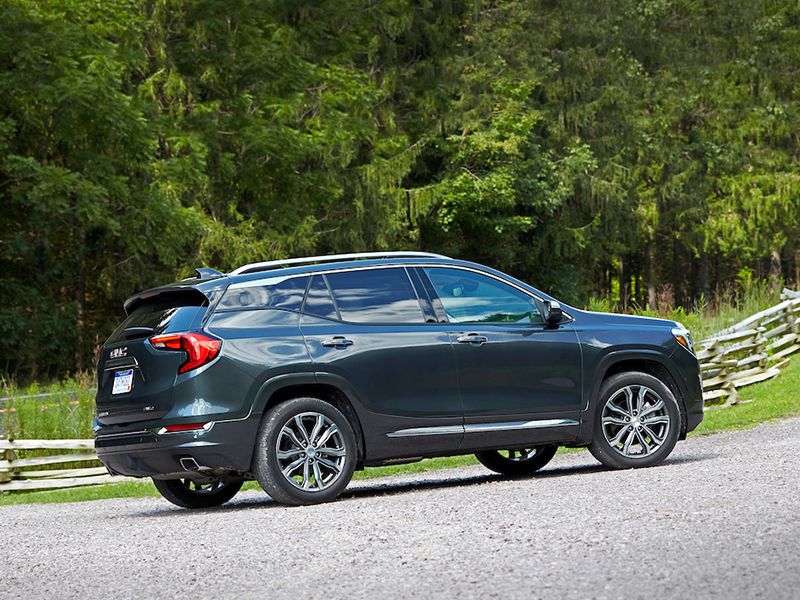
Photo by GMC
Interior Design
The first thing you’ll notice when you get behind the wheel of the Terrain is its push-button shifter, a design choice that takes some time to adjust to but does free up some space on the console. (The Acadia uses a traditional gear selector.)
The Terrain will fit four adults fairly comfortably or five in a pinch. The larger Acadia offers five-, six-, or seven-passenger seating, though its third row is quite small, with decent headroom but not much legroom. The seats themselves in both models are comfortable, and interior materials are similar in quality. With all the rear seats folded down, the Terrain offers 63.3 cubic feet of cargo space while the Acadia has 79.
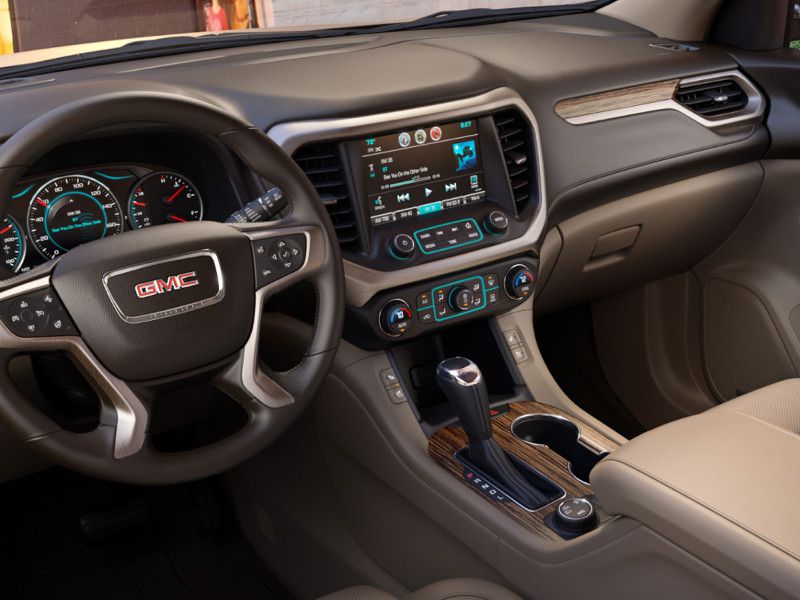
Photo by GMC
Technology
Tech-wise, the Terrain and Acadia are similar, with both offering a standard built-in 4G LTE Wi-Fi hotspot, SiriusXM satellite radio, and standard 7-inch color touchscreen infotainment systems with Bluetooth streaming audio and Apple CarPlay and Android Auto support. Both models are available with an 8-inch infotainment system with navigation and a Bose premium sound system (with seven speakers in the Terrain and eight speakers in the Acadia). Base trims of both models come with a 3.5-inch driver information display in the instrument cluster, while higher trims come with a 4.2-inch color display and an 8-inch display is available on top-of-the-line Acadias. And, of course, the Terrain has that push-button shifter.
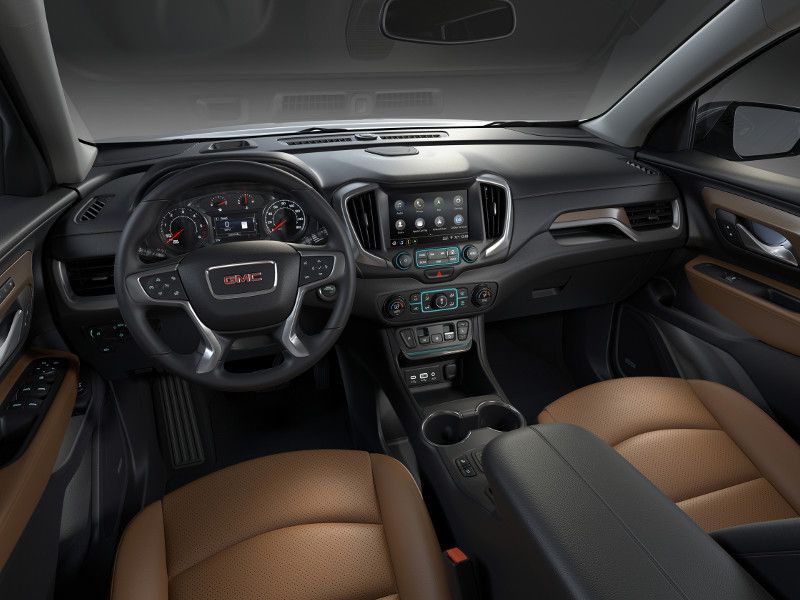
Photo by GMC
Family-Friendliness
Both the Acadia and the Terrain have available heated rear seats and universal tablet holders for rear passengers, and both offer an optional rear entertainment system. If you’re planning on towing a small camper on your next family vacation, the Terrain is rated at a decent 3,500 lbs with the 2.0-liter turbocharged engine, but that drops to 1,500 lbs with either of the other engine options.
Despite its size and power, the Acadia can only tow 4,000 lbs with the 3.6-liter V6, and that drops to 1,000 lbs with the four-cylinder engine. The obvious difference between the two in the family-friendliness department is the Acadia's extra luggage and passenger capacity.
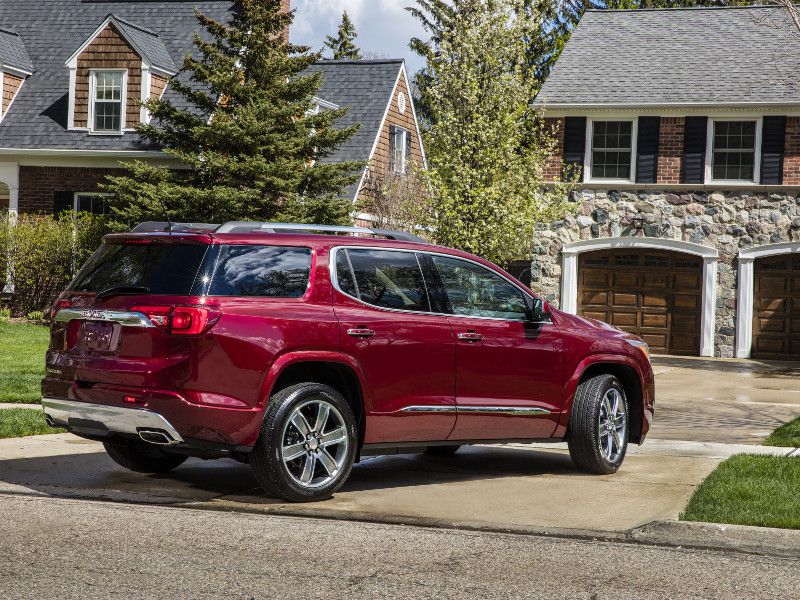
Photo by GMC
Safety
Both the Terrain and the Acadia are rated "Good" in all tests by the IIHS and offer "Superior" front- crash prevention when equipped with a forward collision warning and automatic braking. However, the Terrain’s headlights were rated "Poor" while the Acadia’s were scored slightly better at "Marginal."
In NHTSA testing, later versions of the 2018 Terrain scored five stars overall, but early versions are only rated four stars. The Acadia earned four stars overall with front-wheel drive and five stars overall with all-wheel drive. Both SUVs are also available with blind-spot monitoring, a rear cross-traffic alert, and a lane-departure warning with lane-keeping assistance.
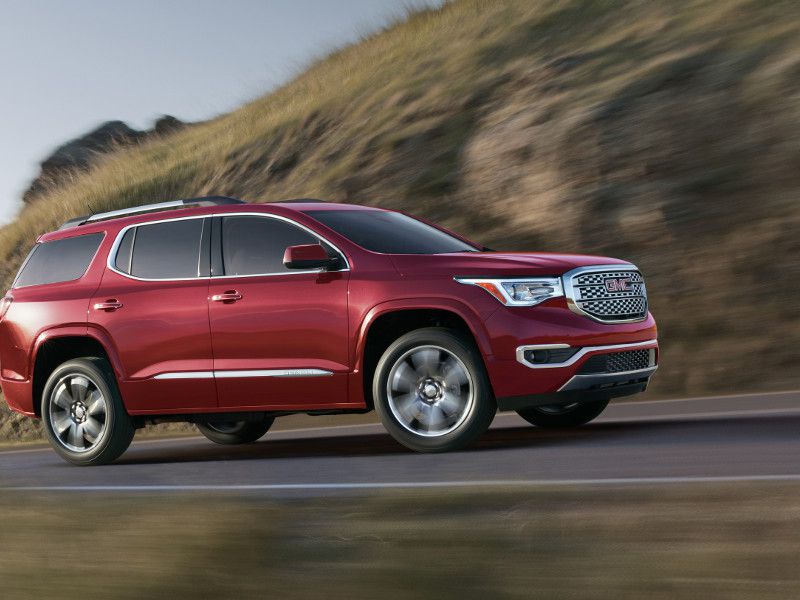
Photo by GMC
The Verdict
If you absolutely need seating for six or seven or place a premium on ride comfort, then the choice is clear: The Acadia is the GMC crossover for you. Otherwise, the Terrain is the slightly better of the two, just edging out the Acadia with three wins to two (while tying in three categories) thanks to its lower price, more attractive styling, similar equipment and feature set, sportier driving characteristics, and superior fuel economy.
Meanwhile, if you don’t need seating for seven, can handle the slightly lower amount of cargo space and slightly lower towing capacity, prefer a slightly sportier ride, or put an emphasis fuel economy, then the Terrain should tick most of your boxes.
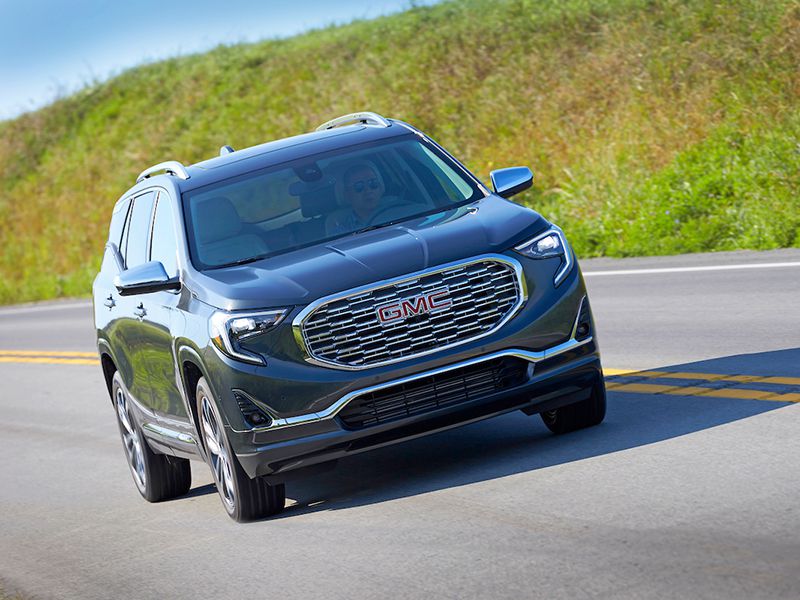
Photo by GMC